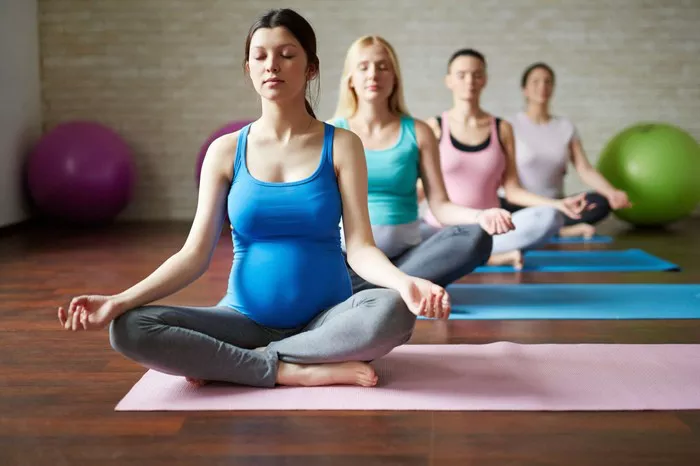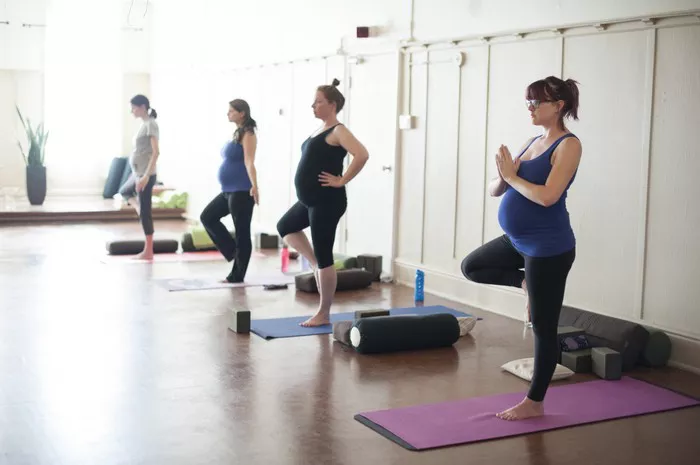The first trimester of pregnancy is a time of significant changes in a woman’s body. During this stage, many women wonder whether it is safe to continue or start physical activities like yoga. Yoga, a practice that combines physical poses, breathing exercises, and meditation, has long been celebrated for its benefits in maintaining flexibility, reducing stress, and improving overall well-being. However, pregnancy, especially in its early stages, comes with specific concerns that may require adjustments to one’s routine. In this article, we will explore whether yoga is safe during the first trimester, the potential benefits, and the precautions you should take.
Understanding the First Trimester
The first trimester spans from conception to week 12 of pregnancy. It is during these early weeks that the body undergoes significant hormonal and physical changes to support the developing embryo. Fatigue, nausea, and heightened emotional sensitivity are common experiences during this time. It is also the period when the risk of miscarriage is highest, which often leads to caution about physical activities.
Physical and Hormonal Changes
During the first trimester, hormone levels, particularly progesterone and estrogen, increase significantly. These hormones are essential for supporting the pregnancy but can also lead to feelings of fatigue, nausea, and dizziness. The uterus begins to expand, and while the physical changes might not be as visible on the outside, the body is working hard on the inside to nurture the growing baby.
Due to these factors, many women might feel too tired or unwell to exercise. However, gentle activities like yoga can help alleviate some of these discomforts, provided that the practice is adjusted to suit the needs of the pregnancy.
Benefits of Yoga in the First Trimester
Yoga can offer a wide range of benefits during pregnancy, even in the early stages. These benefits extend beyond physical health and support mental and emotional well-being, which can be particularly important during the often-challenging first trimester.
Reducing Stress and Anxiety
One of the primary benefits of yoga is its ability to reduce stress and anxiety. The first trimester can be an emotionally charged time due to hormonal changes, fears about miscarriage, and adjusting to the idea of pregnancy. Yoga’s focus on deep breathing and mindfulness can help calm the mind and create a sense of inner peace.
Improving Circulation
Gentle yoga poses can help improve circulation, which is especially beneficial during pregnancy. Enhanced blood flow supports the developing fetus, reduces swelling, and prevents discomfort such as leg cramps, which can occur as early as the first trimester.
Relieving Nausea and Fatigue
While yoga cannot cure morning sickness, certain poses and breathing techniques may alleviate nausea and help increase energy levels. Gentle movement stimulates circulation and oxygen flow, which can counteract the fatigue and sluggishness that many women feel in early pregnancy.
Supporting Physical Fitness
Maintaining physical fitness during pregnancy can improve stamina, flexibility, and strength, all of which are beneficial as the body prepares for the physical demands of childbirth. Yoga provides a low-impact way to stay active without putting excessive strain on the body.
Is It Safe to Practice Yoga in the First Trimester?
The general consensus is that yoga is safe during the first trimester as long as it is practiced mindfully and certain modifications are made. It is important to listen to your body and avoid pushing yourself too hard. Pregnant women should consult their healthcare provider before starting or continuing any exercise program, including yoga.
Modifications for the First Trimester
Some yoga poses may need to be modified or avoided altogether during the first trimester. For example, poses that involve intense twisting, deep backbends, or strong abdominal engagement should be avoided, as these can put pressure on the uterus or overstretch the abdominal muscles.
Avoid Overstretching
Relaxin, a hormone released during pregnancy, helps the body prepare for childbirth by loosening ligaments and joints. While this is essential for the birthing process, it can also increase the risk of overstretching and injury during yoga. It is crucial to avoid pushing your body too far into poses and to maintain a focus on stability rather than flexibility.
Avoid High-Impact or Inverted Poses
Poses that involve high impact or inversions (such as headstands or shoulder stands) are not recommended during the first trimester. These poses can increase the risk of falls, dizziness, or excessive pressure on the abdomen. Instead, focus on grounding poses and gentle stretches that promote relaxation and balance.
Safe Yoga Poses for the First Trimester
While some poses should be avoided during the first trimester, many yoga poses can be safely practiced with proper modifications. Below are a few poses that are generally considered safe and beneficial during the early stages of pregnancy:
1. Cat-Cow Pose (Marjaryasana-Bitilasana)
This gentle back-and-forth movement between Cat and Cow poses helps to stretch the spine, relieve tension in the lower back, and improve circulation. It is a great way to release tension and maintain mobility in the spine without placing any strain on the abdomen.
2. Child’s Pose (Balasana)
Child’s Pose is a resting pose that allows you to stretch the lower back, hips, and thighs gently. It is also a calming pose that can help reduce anxiety and stress. During pregnancy, you may want to widen the knees to make space for your growing belly.
3. Seated Forward Bend (Paschimottanasana)
This pose offers a gentle stretch for the back and legs without putting pressure on the abdomen. It’s important to keep the knees slightly bent and avoid pushing yourself too far into the pose.
4. Butterfly Pose (Baddha Konasana)
Butterfly Pose opens the hips and inner thighs, areas that can become tight during pregnancy. This pose also promotes relaxation and can help alleviate stress in the lower back.
5. Mountain Pose (Tadasana)
Mountain Pose is a foundational standing pose that promotes balance and stability. It helps improve posture and encourages deep breathing, which can be especially helpful in managing stress and anxiety during pregnancy.
6. Legs Up the Wall Pose (Viparita Karani)
This restorative pose is a great way to relieve tired legs, reduce swelling, and promote relaxation. It can also help alleviate nausea and headaches that are common in the first trimester.
Precautions for Practicing Yoga in the First Trimester
While yoga can offer many benefits during pregnancy, it’s important to approach your practice with caution, particularly in the early weeks. Here are some key precautions to keep in mind:
1. Listen to Your Body
Your body will give you clear signals if something is not right. Fatigue, dizziness, or nausea are signs that you may need to take a break or modify your practice. It’s important to listen to these cues and avoid pushing yourself too hard.
2. Avoid Overheating
Pregnancy increases your body’s core temperature, making it easier to overheat. Avoid practicing in hot environments, such as during hot yoga classes, and ensure that you are practicing in a well-ventilated space. Staying hydrated is also essential.
3. Focus on Breath Awareness
One of the key elements of yoga is breath awareness, and this is particularly important during pregnancy. Focus on maintaining steady, calm breathing throughout your practice, and avoid breath retention or rapid, forceful breathing techniques.
4. Avoid Lying Flat on Your Back
As your pregnancy progresses, lying flat on your back can compress the vena cava, a major vein that carries blood to the heart. This can lead to dizziness or reduced blood flow to the baby. In the first trimester, this is less of a concern, but it’s still a good idea to start incorporating side-lying or seated positions as alternatives.
See also: Is Yoga Safe for Pregnancy?
Consulting Your Healthcare Provider
Before beginning or continuing yoga during pregnancy, it’s important to consult your healthcare provider. Every pregnancy is different, and certain conditions may require specific modifications or restrictions. Conditions like high blood pressure, a history of miscarriage, or placenta previa may mean that certain activities should be avoided altogether. Your healthcare provider can offer personalized guidance based on your health and the specifics of your pregnancy.
Conclusion
Yoga can be a safe and beneficial practice during the first trimester of pregnancy, but it’s essential to approach it with care. By modifying poses, focusing on breath awareness, and listening to your body, you can enjoy the physical and emotional benefits that yoga offers without putting your pregnancy at risk. Always consult with your healthcare provider before starting or continuing a yoga practice during pregnancy to ensure that it is safe for you and your baby.
Through mindful practice, yoga can support you during this transformative time, helping you stay calm, flexible, and connected to your body as it nurtures new life.
Related topics:
How to Do Yoga to Prepare for Labor? A Complete Guide





















